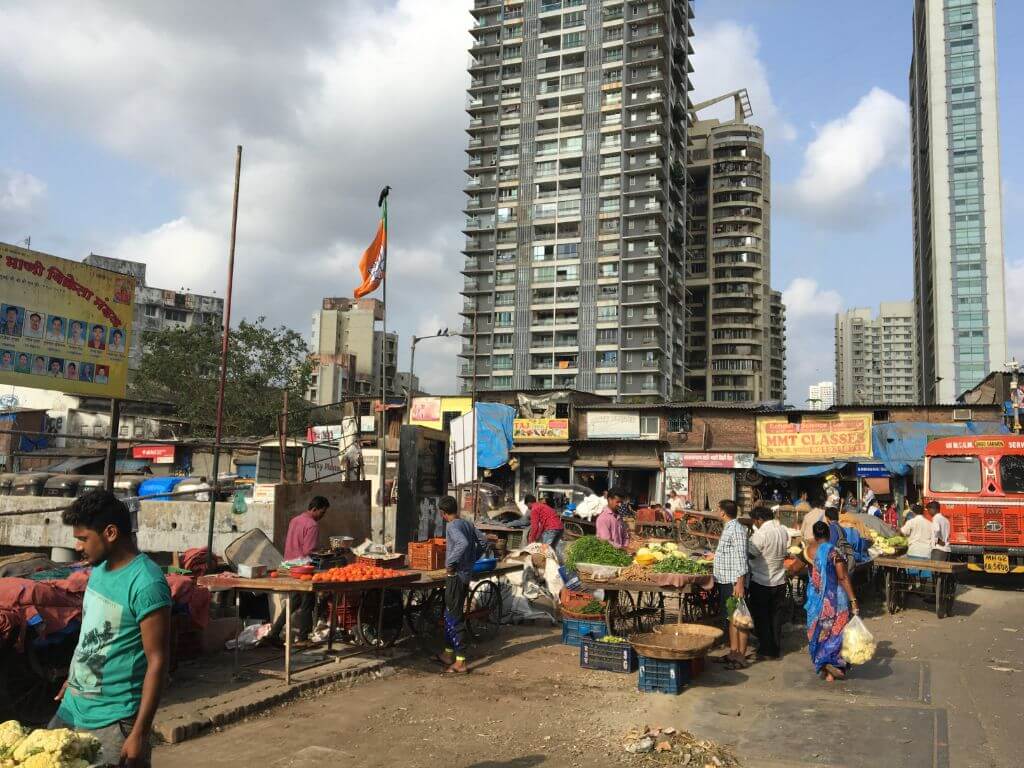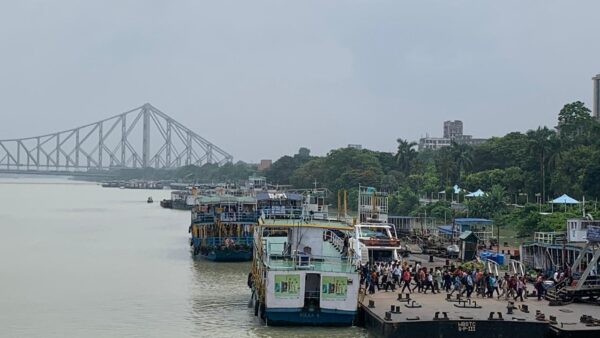“But every little girl is brought up to know that she must walk a straight line between home and school, home and office, home and her friend or relative’s home, from one ‘sheltered’ space to another.”
So said Shilpa Phadke, Sameera Khan and Shilpa Ranade in their book ‘Why Loiter’. It was true for me. As a pre-teen, I was allowed to walk to school, 400 metres away, only if I took the busy main road. I finally saw Juhu beach in the dark only when I turned 22. A sheltered life in the privileged environment of Juhu Scheme made me believe that girls did not walk certain roads, visit certain spaces, and came home latest by 9pm. My friends, all girls, called them “house rules”. Years later, I realised that these were different for my younger brother.
As night approached, the streets of Juhu Scheme which felt familiar in daytime turned into streets I was not allowed to be alone on. I began associating some city spaces as threatening, dangerous and inaccessible. My experience, frustration and awareness culminated in this research on gendering of spaces. How women must conduct themselves, or self-surveillance, is instilled in most women from a young age. It results in us being uncomfortable in male-dominated spaces, encountering the male gaze as we navigate public spaces, modifying our behaviour.
As an architect, I learned that when space is designed, it consciously or unconsciously influences relationships – relationships between the built form itself, between its users, and between the built form and users. More often than not, when a space is not assigned a particular function, people tend to organise themselves in that space based on their social group, comfort and familiarity with one another. This organisation, or social form, is influenced by a number of factors, one of which is gender.
Let us consider gender as a spectrum of identities, with heterosexual males at one end and heterosexual females at the other. Usually, spaces appear to be dominated by heterosexual males with routine passive actions like sitting on a particular katta at a particular time, every day, perhaps unaware of their inherent action of claiming that space, or through more active and traditionally masculine actions like smoking or catcalling women who pass by.
Since gender is an awareness of one’s own body, each body with its social and cultural history occupies space differently. You are conscious of your body with respect to other bodies and objects, which plays a primary role in how you experience that space. Thus, a gendered space is any space that one or more gender groups find difficult to perceive, navigate and occupy, generally due to the dominating presence of another gender group. This is largely experienced by all or most women.
Certain implicit rules of behaviour in public spaces are imparted to a “respectable” woman which dictate how much freedom women exercise in these spaces. Gender binaries that are reinforced through various cultural and social practices reflect in everyday experience of women. For example, shopping is seemingly ungendered but is perceived to be “feminine” due to the presence of large groups of women frequenting these spaces.
However, women generally do not claim public spaces in the same way men do – confidently and unabashedly. Rather, women tend to undertake passive actions and micro-negotiations through which we assert our claim on public spaces, which may vary from space to space, be bold in some spaces and timid in others. My study explored the spaces that women frequent during their everyday life: Street markets and shopping malls.
Markets as womens’ spaces
According to Martina Low in The Social Construction of Space and Gender, “Over the past ten years, two concepts of central significance in the social sciences have come up for re-discussion: ‘space’ and ‘gender’. Today the two concepts are seen as relational, as a production process based on relation and demarcation”. Space, a multidimensional expanse, encompasses built form, where people and objects are free to move. Spaces cannot simply be assigned to people. It is the politics of the use of this space, characteristics of built form, configuration of objects in a space and surrounding functions that are perceived to be traditionally masculine or feminine.
Markets of all kinds happen to be places where women assert claims. Other than the act of shopping, markets have a way of transforming into spaces by women, and largely for women, even if for a few hours a day. “It is normally regarded that architecture and edifices are simply ‘empty’ or ‘neutral’ containers that facilitate the free interaction of bodies in space”, stated Gerard Rey A. Lico in Architecture and Sexualoty: The Politics of Gendered Space. This leads us to question space that allows people to gather or form clusters, the role design plays in its apparent gendering, and why certain spaces seem gendered. Through layered observations, we understand the differences in how women perceive, navigate and occupy these spaces, and degrees of freedom they undertake in doing the same.
The street market differs from a mall in terms of the degrees of freedom for women though both, with their wares such as clothing and shoes, home accessories, kitchenware, cosmetics and hairdressers, open themselves up to female users. Vendors selling brightly coloured purses and garlands, trendy jewellery and floral-patterned kurtas attract errand-busy as well as loitering women in the evening, but not too late at night. The way in which street markets and shopping malls are designed is not specific to women, but the way and time they are used by women differ from men.

Photo: Shivani Dave
Prem Nagar Street Market
Running perpendicular to the busy Link Road, Prem Nagar is a settlement opposite Inorbit Mall in Malad West in Mumbai, with nearly 30,000 houses. The edge of this settlement forms its market street – a busy vehicular and pedestrian access road approximately 13 metres wide that offers a multitude of activities through the day and night. The street connects Link Road to inner residential high-rises while the nullah running parallel on the left is a place to dump trash, hang out, or simply stand in wait. With public toilet blocks, informal street vendors, rickshaw and two-wheeler parking on the left, and formal shops of all kinds on the right, this market street is home to several small businesses such as general and grocery stores, family restaurants and cloud kitchens, clothing and footwear shops, mechanic and plywood stores.
The two toilet blocks, one for men and one for women, dictate the positioning of informal vendors on the left. Vendors for combs, containers, small kitchen accessories, hair accessories and other miscellaneous home items situate themselves around the women’s toilet block, expecting business from the women who frequent it. Rickshaws, two-wheelers, a few barbers and chaiwalas are usually parked around the men’s toilet block, often occupying a significant portion of the street and reducing its width.
The street’s design itself is not gendered. Going towards residential high-rises, this street’s section from left to right comprises a nullah, a medium-height boundary wall of the nullah, toilet blocks, the road, small instances of a footpath, leading to formal shops on the ground floor of Prem Nagar’s houses. However, when observed from early morning to late night, the movement and manner of occupation of people changes.
Women and men change their roles from passersby to errand-runners to shoppers to loiterers and more. When it’s early evening, we see large clusters of men near the rickshaw parking, sipping on their chai and reading the newspaper on the katta, setting up their vegetable and chaat stalls, along with some teenage boys sitting in the parked rickshaws and two-wheelers. During this time, most women only pass through this street, briskly walking, with some taking a pause to browse items from the vendor outside the women’s toilet block.
The busiest time of the street is between 6pm and 8pm. The fruit and vegetable vendors position themselves in a haphazard line on the left, as rickshaw parking slightly reduces in the evening, which indirectly offer clear routes for women and men. Women frequent fruit-vegetable vendors on the left while men frequent some mechanic shops and tapris on the right.
Women who are alone seem to run errands, usually carrying tote bags, buying groceries and other miscellaneous items for their homes while they make their way through each vendor, seeing what’s on offer. Women with children are seen grocery shopping and loitering, allowing their children to play around them while they catch up with other mothers. Women with men are seen enjoying street food, primarily chaat and sandwiches, also buying groceries. Women with other women are seen gathered around fruit-vegetable and miscellaneous items vendors, looking at each other’s shopping bags, talking about what they plan on making for dinner, asking how their kids are doing.
Slowly but surely, the left side of this street is almost completely occupied by women, while men take the right. With women primarily oriented towards the vendors, and having strength in numbers, apparent gendering of this street takes place. Clusters of men that are usually avoided now do not seem to have a looming presence; if they are around, women simply side-step while walking as opposed to women crossing the road and walking on the other side, or hurriedly moving past, when large groups of men dominate the street.
Inorbit Mall
Situated opposite the vibrant Prem Nagar is an air-conditioned sanitised space for shopping, designed like any large mall. It sees a variety of users throughout the day. Open from 11am to 9:30pm, this premium mall has designated vehicular and pedestrian accesses, with not much room for informal activities immediately outside its premises or within its boundary walls.

Photo: Shivani Dave
A large atrium greets you upon entry, with a central staircase anchoring the otherwise-empty space, visually guiding your eye to the number of levels. Each glass-front shop vividly displays its items and is neatly arranged in a line on the ground and first floors, with a wide passage running through the floor plan granting access to them. The second floor is reserved for the food court, an arcade and movie theatre which are neatly arranged to provide clear access to each activity. The spatial design gives primary importance to efficient movement of people and designated areas for activities – a clear absence of benches here signifies that one can loiter as long as they keep walking.
During the day, an almost equal number of women and men are present on the ground and first level, leisurely browsing. Since the shops are not particularly gendered (even though there are more options for women than men), there seems to be something for everybody. In a shopping mall, signages, entry-exit points, escalators and staircases serve as orientation devices. In a few stores, some women are seen gravitating towards smaller clusters of other women, but in the mall itself, women seem to take a more relaxed approach – the space provides a more comfortable and leisurely shopping experience than the street.
Women are seen undertaking purpose-based shopping as on the street, but are also seen more at leisure, wandering from one store to another, getting a cup of coffee, grabbing a quick meal, ambling while looking at every display window and so on. It is important to note that while the architectural design of a mall is made to support loitering and similar activities, this luxury is for a certain socio-economic class. This is not to say that people are not allowed but acknowledging that only certain socio-economic class people can afford to leave their homes and routine activities to intentionally spend time loitering, shopping and being at ease in this space.

Photo: Shivani Dave
Understanding gender and space
What started as “Women’s Studies” in the late 1950s as a response to the exclusion of women’s participation and contribution to traditional academic disciplines, slowly developed into the discipline of Gender Studies in a few decades. Done primarily by women, academic writing and research on gender and architecture took shape then, examining “man-made” environments through the feminist angle. In the context of architecture, gendering is revealed through the writings of architects who talk about masculine and feminine features of architecture. For Le Corbusier in The City of Tomorrow and its Planning, “the straight line is deeply impressive in the confusion of nature, it is the work of men”. Mark Wigly in Sexuality and Space writes about ornamentation being a feminine characteristic of space.
One of the first academics to weigh in was Daphne Spain in Gendered Spaces and Women’s Status where she talked about how spatial segregation in homes, schools and workplaces reinforces and reproduces prevailing status distinctions and gender roles. However, though she cited a number of cross-cultural and historical examples that illustrate how gender stratification continued, she also mentioned how “gendered space may even empower women by allowing them to develop their own rituals”, only if “such be beneficial to women if they are available by choice and not by necessity”.
I mention Daphne Spain because she is among the first to not only write about existing gender stratifications but also give importance to the idea that gendering of space has the potential to be a positive occurrence. Women, in everyday settings such as markets-shopping, adopt a strategy of micro-negotiations as they perceive, navigate and occupy different public spaces.
What it means to perceive: “A lived body perceives through its immersion, awareness and actions in a context”, as Maurice Merleau-Ponty puts it in Phenomenology of Perception. To perceive is to become aware of something or someone. It is a dynamic between you, a body, and the experience of the body’s surroundings, through different senses. In the context of public space, women and men have different methods of perceiving the same space. What is the dynamic between a woman and public space, how does she perceive public spaces?
What it means to navigate: “Look carefully and you will find that the women in neatly pinned saris also wear equally discreet but nonetheless visible mangalsutras that mark them as married…The women on their way to college in tight t-shirts also have their files clasped carefully to their chests in their classic posture of defensiveness. The corporate woman keeps her cellphone close to her, especially when she travels at night. The women in the ridha are only allowed their Scootys on the condition that the ridha goes with it. The women in the club have jackets tucked under their chairs that they put on the moment they step out of the club” , says Why Loiter. When navigating public spaces, women exercise different degrees of freedom, depending on the space, time of visiting and surrounding people and programmes.
What it means to occupy: “Orientation is how we reside in a space,” Sara Ahmed, British-Australian feminist writer and independent scholar, notes in Queer Phenomenology: Orientations, Objects and Others. To occupy is to be situated in, for an extended period of time. Our occupation of space depends on our orientation towards that space, which is influenced by configuration of objects within that space, and configuration of the space itself. While talking about occupying public space, we need to look at “to occupy” not as a residence, but our occupation of the space during the activity we conduct there.
Through these three lenses, we also come across the idea of ‘safe spaces’ – defined in this context as any space that is specifically created for marginalised groups to come together and share their stories and experiences, and is free of bias, criticism and potentially threatening actions or conversations. Even though street markets and shopping malls are not architecturally designed to be gendered, they undergo the process of gendering – while both are spaces that comprise of actions of buying goods, the latter provides for more opportunities for women to loiter, let their guard down, and engage with the experience of buying goods more, as compared to the former.
Can this insight be used to reimagine shopping spaces for women that can be used for other purposes? Can it inform spatial design in cities?

Photo: Shivani Dave
Connecting gender and space
Based on the analysis of the two case studies with field observations, the key finding of this study is that the spatiality of a space changes the experience of the space for women. Their manner of habitation changes when they are in an unregulated, open, unsecuritised street market with open vehicular access versus a regulated, enclosed, securitised mall without vehicles.
The spatial logic of a street market – temporary open structures, vehicular traffic and noise disturbances while shopping, various kinds of parking that result in disturbed movement patterns, increased movement of people, divided attention from sellers – all amalgamate and manifest into an overall busy experience, with the women wanting to finish their task and escape.
The spatial logic of a mall – large air-conditioned spaces with open atriums and multiple seating options, no vehicular disturbance within the shopping space, slower less rushed movement of people, undivided attention from store staff – all amalgamate and manifest into an overall comforting experience, with its users, especially women, spending some extra time within the space.
Loitering, the act of standing or walking with no apparent purpose, is an action primarily undertaken by men; a “respectable” woman does not loiter. While men standing at a paanwala, sitting on a road divider, wandering late at night are familiar sights in a city, women’s presence on streets is primarily purpose-based. Going for a jog, grocery shopping, clothes shopping and other activities involving specific purposes come closest to “loitering” for women.
Between the street market and the shopping mall, women loitered in the latter, not the former, where they lay claim. Malls advertised merchandise to women through attractive displays and sale banners – here, women indulged in shopping for consumptive reasons, as opposed to shopping for a specific purpose, like on the street market.
Through repeated acts and negotiations in a space, women form our own time-space routines that allow us to feel comfortable. Women’s degrees of freedom vary from space to space, and are seldom absent when navigating everyday spaces. As seen in this research, shopping malls are perceived as safe spaces for all kinds of women, providing them with purpose (shopping) and loitering with unstated permission to do so. When women assert their claim on public spaces, such as street markets, gendering is unconsciously used as a tool to reimagine spaces that are more comfortable for and welcoming of women.
Shivani Dave is an architect, writer and illustrator interested in exploring the intersection of architecture and social sciences. After graduating in architecture from Mumbai, and in media from the London School of Journalism, she is applying the fundamentals of architectural research and writing within urban contexts to develop phenomenological ideas about life in cities. She researches, writes and illustrates in Question of Cities.
Cover photo: Shivani Dave




